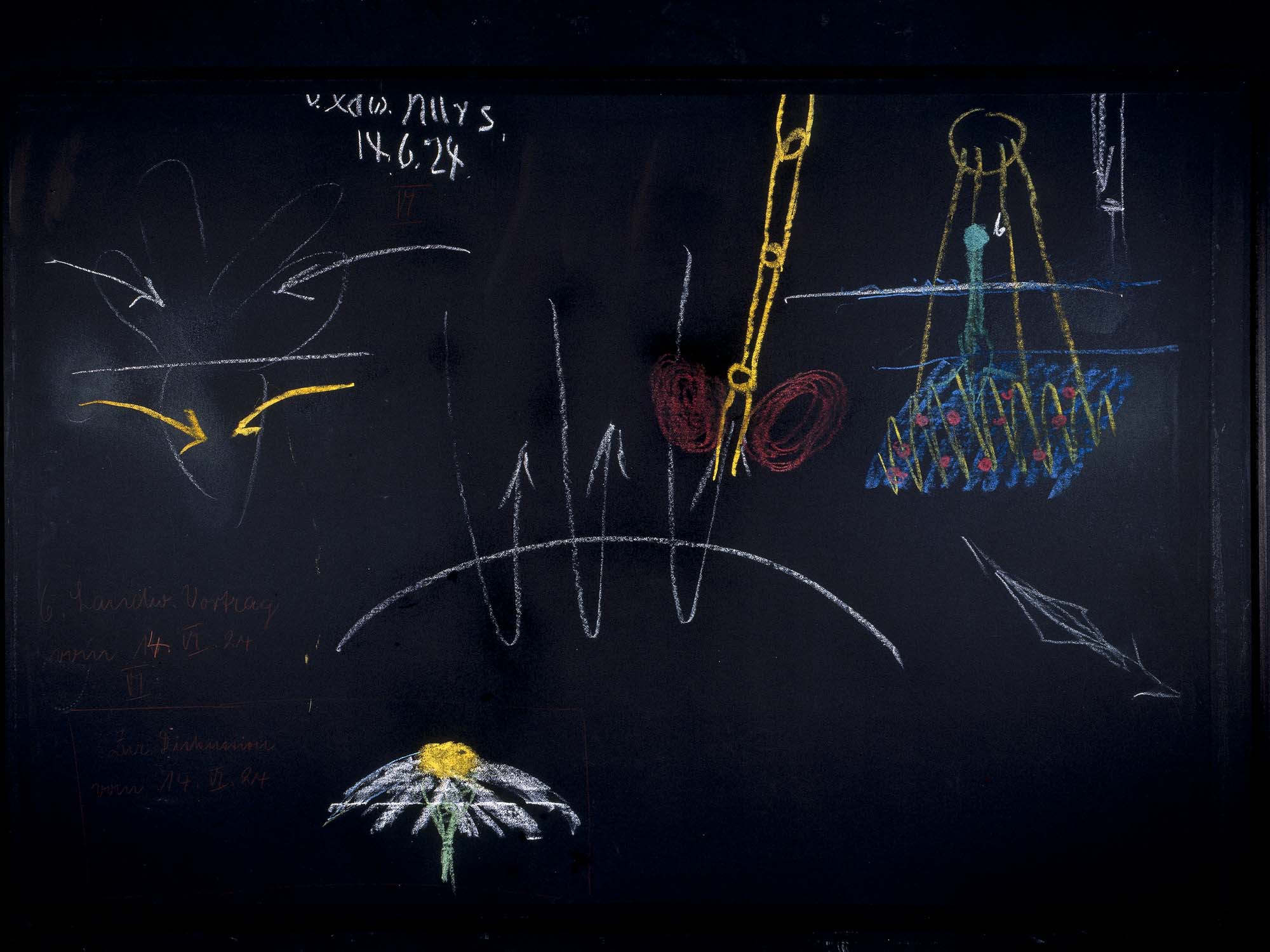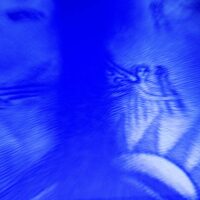Rudolf Steiner was not a farmer. Despite this, he delivered the Agriculture Course—eight lectures in June 1924 that provided the starting point for a profound and wide-ranging renewal of agriculture. How was he able to speak in such a way that his words were and still are fruitful for farmers, gardeners, landscape designers, and plant breeders? Where did he get this knowledge from?
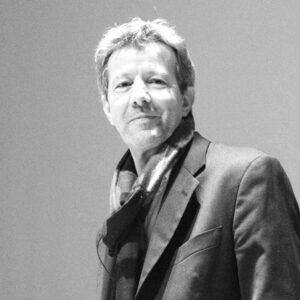
In this context, I also aim to resolve some uncertainties and outdated knowledge. For example, an article by Wolfgang Held, published in Das Goetheanum, states that “agricultural ecologist Andrew Lorand estimates that seventy percent of Rudolf Steiner’s Agricultural Course was adopted from other authors.”1 So, I will try to broaden the horizon of questions and ask how much of the spiritual scientific knowledge in the course has been adopted from elsewhere—in the sense that it is ancient human knowledge—and how much is genuinely from Steiner. In any case, what is true is that even if Rudolf Steiner’s Agriculture Course contains facts from natural science, agronomic knowledge of the time, human wisdom from the Mysteries, and other things, the course itself is a genuine new creation.
Biographical Sources
Steiner was a scientist, man of letters, philosopher and theosophist—how could he possibly have had any contact with agriculture? Well, due to the circumstances of life at the time, it was impossible for him not to have had such contact since, around the year 1900, fifty per cent of the population in Central Europe worked in agriculture. Rudolf Steiner grew up in the countryside, admittedly at the railway stations where his father worked, but cattle grazed next to the tracks. “I grew up entirely out of the peasant folk, and in my spirit, I have always remained there—I indicated this in my autobiography. Though it was not on a large farming estate such as you have here, in a smaller domain, I myself planted potatoes, and though I did not breed horses, at any rate, I helped to breed pigs. And in the farmyard of our immediate neighbourhood, I lent a hand with the cattle.” (CW 237)2
As a student at the University of Applied Sciences in Vienna, he studied many scientific subjects and acquired a broad knowledge of natural history, and he kept up to date with the rapidly advancing research throughout his life. He then published Goethe’s scientific writings and in doing so, acquired an alternative view of nature, a view in line with its essence. During his time as a tutor to the Specht family, he had access to the accounting books of the textile trading company of the master of the house and learnt a lot about the global trade in colonial goods such as cotton. He was acquainted with and a friend of the herbalist Felix Koguzki, who had a deep knowledge of nature. Another friend he visited in Transylvania published an agronomic journal (Rudolf Steiner, Autobiography, CW 28). Among the Theosophists were landowners whom he visited on their estates and with whom he discussed agricultural matters. The “Kommende Tag” [Coming Day], an associative economic community, also included farms. The Coffea preparation was developed in this community in the early 1920s, together with the veterinarian Joseph Werr and others. Visits to the stables were the order of the day.
Furthermore, Steiner’s profound medical and pharmaceutical knowledge, which he had been testing in practice in collaboration with doctors since 1920, must also be mentioned. To sum up, it can be said that agriculture had a place in the universal horizon that Rudolf Steiner worked to acquire throughout his life.
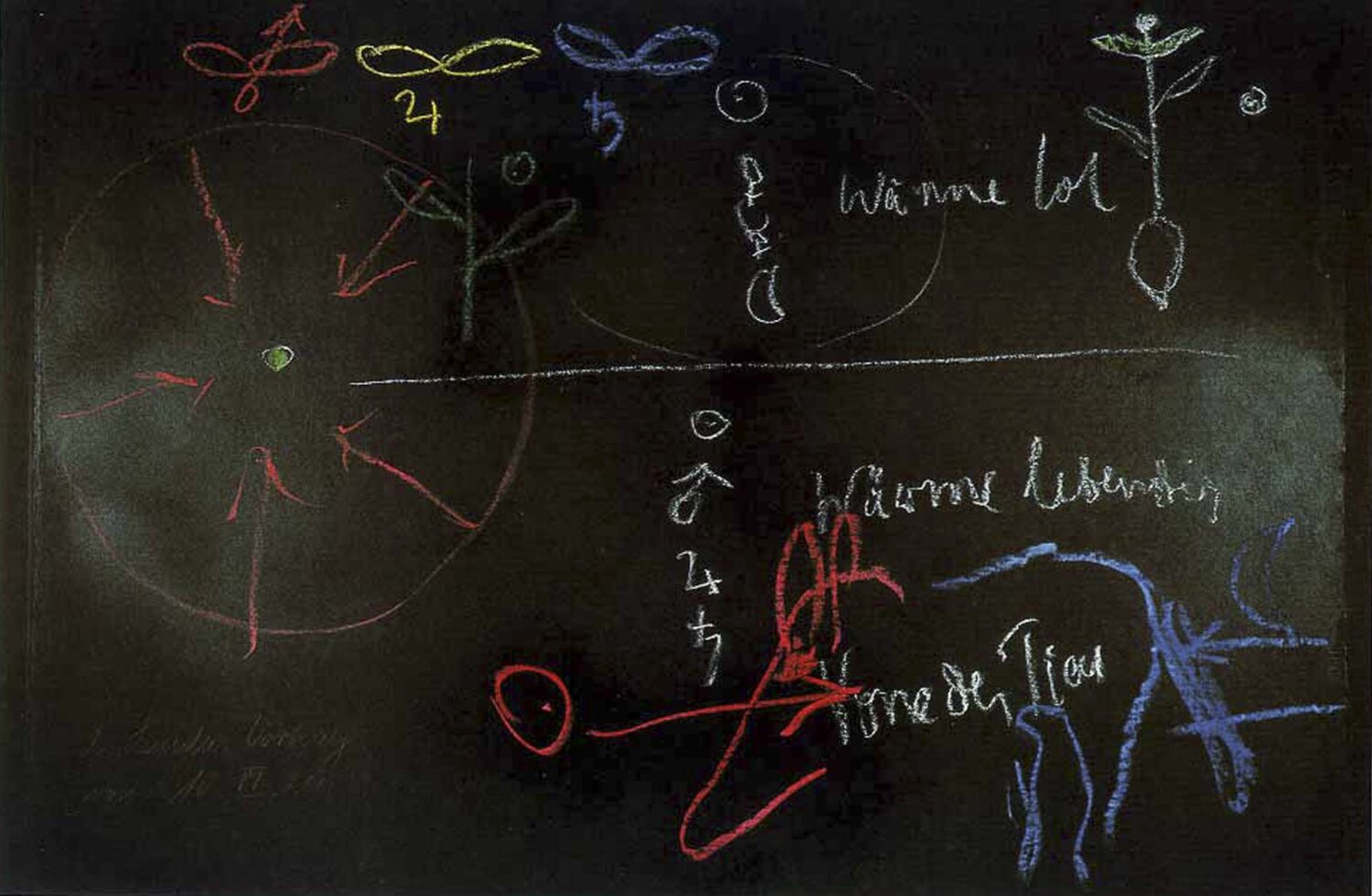
Study of the Specialist Literature
At the Christmas Conference 1923/24, Rudolf Steiner’s long-requested Agricultural Course was promised for Whitsun 1924. Steiner spent his nights studying specialist agricultural literature. What he read and how he went about it is well documented in his notebooks. Steiner’s library contains 23 works on the subject of agriculture. In his 2009 study Analyse der Notizzettel von Rudolf Steiner zum Landwirtschaftlichen Kurs [Analysis of Rudolf Steiner’s Notes on the Agriculture Course], Hans Vereijken was able to show the specialist books to which many passages in Steiner’s notes refer; this is indicated in the facsimile. Essentially, he studied four specialist books.3
The uncertainty as to how much of Steiner’s content and vocabulary in the Agricultural Course has been adopted from others relates primarily to his study of the specialist literature. He did what is customary in science: before making a contribution, a study is undertaken of all the publications that have already been produced on the chosen topic. There are notepads from Steiner that only contain keywords and extracts from the specialist books. Suddenly, a hashtag appears, followed by his findings. In these places, we can see what comes from him and what comes from others.
One example: Steiner studies Albert Studler’s Schweizerisches Landwirtschaftliches Lexikon [Swiss Agricultural Dictionary] and notes the distinction between loam, clay, marl, limestone, and humus soils. Then he makes the hashtag symbol and writes “siliceous rock, clay, limestone, humus” and draws a line with the astronomical symbol for the sun. Above the line, he draws the symbols for Venus, Mercury, and Moon and below the line the symbols for Saturn, Jupiter, and Mars. The explanation for this can be found in the second lecture of the course, where siliceous rock, clay, limestone, and later humus, are described in terms of their functionality in the soil from the viewpoint that planets below the sun act above the soil and planets above the sun act below the soil. We can see from this example how Steiner extends the existing specialist knowledge to include the cosmic dimension. So, does the soil science in the Agriculture Course come from others, or is it Steiner’s contribution?
On the question of vocabulary, Steiner speaks in the course of the ”agricultural organism” and of the farm as an “individuality” to describe farming as a whole. The term “organism” was commonly used at the time in describing agriculture. We know that Richard Krzymowski taught agricultural farm management at the then Breslau [now Wroclaw] University from 1922 to 1936 and described the farm as an organism. The young participants in the course were students of his, so when Rudolf Steiner said in the eighth lecture, “Truly, the farm is a living organism”, he was addressing his listeners at the point where they could connect with their own knowledge. He then continued, “Inasmuch as these things are so, your farm is, in truth, a kind of individuality”. The concept of individuality in agriculture undoubtedly comes from Steiner. By this, he means more than an organism, in the sense of the interaction of different parts of the farm—he gives the farm an expanded spiritual and cosmic dimension.
This way of extending established knowledge into the sphere of the living and of spiritual substance becomes clearest in the third lecture on the science of substances. Steiner starts with the chemical substances that make up protein, C, N, O, H and S (carbon, nitrogen, oxygen, hydrogen and sulfur) and describes them in terms of their effect, their activity, and their nature. He does this in a way that makes it possible to work with this in a practical and creative way when shaping and managing an agricultural enterprise.
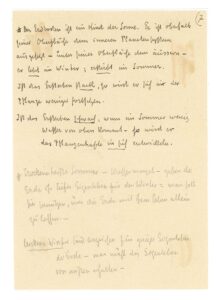
Spiritual Scientific Sources
Rudolf Steiner’s spiritual research work, in particular, was incorporated into the Agriculture Course. In many other lectures, we find passages that appear to be a source for the content we understand to be characteristic of the Agriculture Course. It is true that this content is specific to the Agriculture Course, but more in the way it is presented as practical guidance, as expressed in the “practical conceptual imagery”, than in its deeper content. The latter can often also be found elsewhere in Steiner’s work. An impressive example of this is a series of lecture cycles from the autumn and early winter of 1923. These lectures led up to the Christmas Conference, at which, one year after the fire at the first Goetheanum, the Anthroposophical Society was to be re-founded in such a way that it could form the social ground for a second Goetheanum building and for the establishment of the School with its sections. Six months later, at Whitsun 1924, the newly created Agriculture Course was organised by Count Carl von Keyserlingk and delivered by Rudolf Steiner in the context of the newly founded Anthroposophical Society. At the same time, a large anthroposophical conference was held in the evenings in the nearby town of Breslau [Wroclaw], which included nine karma lectures. Many of the participants in the Agriculture Course attended the karma lectures in Breslau in the evening, and the power that the biodynamic impulse possesses from these beginnings can also be seen in the overall experience—the destiny of the earth, human beings, and the cosmos.
In autumn 1923, from October 5 to 13, Rudolf Steiner gave the lectures The Four Seasons and the Archangels. Experience of the Course of the Year in Four Cosmic Imaginations (CW 229). In mighty images, he describes how substances and forces, and the beings of nature and archangels, interact in different constellations every season. In spring, limestone becomes lively and desirous; in summer, it forms sun-gold, which has a vitalising effect in the depths of the earth in winter. At Michaelmas, iron tames the sulphuric dragon, and at Christmas and in winter, the earth becomes an independent drop in the cosmos to give birth to something new. We can sense how the information in the Agriculture Course on the very specific qualities of particular times of the year are like nuggets from this world of seasonal imaginations. Then, in the fifth lecture on the seasonal imaginations, he describes how the four archangels—Gabriel, Raphael, Uriel, and Michael—work together in the course of the year and how the four phases in nature of germination, growth, blossoming, and ripening correspond to nourishing, healing, thinking, and volition in human beings.
From October 19 to November 11, the “cow cycle”, as it is sometimes called, was given—the lectures Harmony of the Creative Word. The Human Being and the Elemental, Animal, Plant, and Mineral Kingdoms (CW 230). The bull, lion, and eagle are described in their representation of metabolic animals, chest animals, and head animals. The human being is the synthesis of this triad and must balance out the one-sidedness of each animal. The concepts of spiritual and earthly substance, which come up again in the eighth lecture of the Agriculture Course, are introduced here. The insects and birds that we find in the seventh lecture of the Agriculture Course are described in their evolutionary genesis. The work of the elemental spirits in the processes of nature is then discussed in detail. Everything about the elemental spirits that is not included in the Agriculture Course is described in detail here. Finally, the connection between nature and the human being through food is addressed.
From November 26 to December 22, the bee lectures (CW 351) were held for those working at the Goetheanum. They were given spontaneously by Steiner in the mornings, always after the coffee break, in response to questions. The work of anthroposophically inspired beekeeping is based on these lectures. It is amazing how much detailed knowledge Rudolf Steiner had about the biology of bees and the practice of beekeeping, making these lectures a high-quality, professional course. Steiner seemingly effortlessly weaves the high spiritual being of bees into his remarks. With colony collapse disorder, this secondary branch of agricultural activity has, at times, moved into the spotlight. Thus, the 2014 Agriculture Conference had the theme of “The Bees, Creators of Relationships.”
From November 23 to December 22, Rudolf Steiner gave fourteen lectures grouped together under the title Mystery Knowledge and Mystery Centres (CW 232). He describes how, in earlier times, pupils were taught in the places he calls mystery centres. Some of these schools were open at an elementary level to many people in the context of seasonal festivities. This was the case in Eleusis, for example, where Demeter was venerated. For the higher degrees of training, however, these mystery centres were secret and only accessible to selected people. The training corresponded to a step-by-step initiation. Steiner describes the initiation training at Ephesus, Hibernia, Eleusis, and Samothrace, and then the situation in the Middle Ages up to and including the Rosicrucians.
As different as these places and the knowledge taught there were, they did have something in common. They were all concerned with the riddle: What is the relationship between nature and the human being? How do macrocosmic processes and substances correspond to microcosmic processes and substances in humans? What is the evolutionary relationship between humans and the world? Where are bridges of understanding between the human being and the world and between the world and the human being? Steiner now described what was taught and how. And so this lecture cycle becomes a large-scale cosmic study of nature and the human being. Many of these great cosmic imaginations can then be found again in the Agriculture Course in the form of practical tips and seemingly incidental pointers.
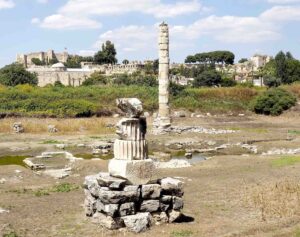
Ephesus and Beyond
The lecture of December 2, 1923, describes the mysteries of Ephesus. The Artemision, a very large temple to the goddess Artemis, stood at this location on the coast of Asia Minor (modern-day Turkey). The temple was considered one of the seven wonders of the world. The initiation that took place there was about language: how does the cosmic word live in the human word? The school existed for several centuries until the temple was destroyed by arson in 356 BC. Alexander the Great was born on the night of the fire. He subsequently carried much of the mystery knowledge, which had been imparted to him in philosophical form by his teacher Aristotle, into the world through his military campaigns.
Much later, around the year 100 AD, the evangelist John was also in Ephesus as an aged man. The beginning of the Gospel of John—”In the beginning was the Word. And the Word was with God. And the Word was God.”—this is like a revival of the ancient doctrine of the word, language, or logos of the Artemision. As Steiner describes in the lecture: “What is revealed, what is disclosed to [the human being]? The stream of cosmic happenings reveals itself as the Word of the Worlds [the Cosmic Word], as the Logos. It is the Logos, the Word of the Worlds that resounds in the arising and falling of the chalk.”4 The limestone element brings the forms imprinted from the cosmos in the albumen atmosphere down to earth: the animal forms arise. The calcareous skeletons enable the diversity of the animal kingdom. If we study skeletal forms, we can learn to see how the formative power of the sun acts at the front and that of the moon at the back. It is precisely this statement that recurs in the Agriculture Course, with the advice that by studying forms in this way, it is possible to find out how many of which animals are needed on a farm.
In the lecture, the plants also come into play, which find their way to earth via the siliceous rock. “The Word was first Tone. The Word was first something which struggled, as it were, for the solution of its own riddle. In the creation of the animal, something that struggled for a solution was revealed. The animal kingdom arose within the chalk as a question. [The human] …looked into the silica, and there, the plant-creation gave the answer; the silica gave the answer to the riddle set by the animal creation. It was the beings themselves who solved each other’s riddles. One being, in this case, the animal, put the question. The other being, in this case, the plant, gave the answer. The whole Cosmos became Speech.”
Is it not this reciprocal deciphering in macrocosmic earth evolution that we find again in the Agriculture Course, where it is emphasised that animals belong to a farm organism? Is not the digestive process in the cow, resulting in the production of manure, which then becomes fertiliser for the plants, such a reciprocal deciphering of plant and animal? And isn’t this intimate dialogue between animal and plant addressed in many places in the Agriculture Course? I believe that we can learn from this example and many others how the Agricultural Course is an expression of a knowledge about the connection between cosmic development and human development, as it was cultivated in Ephesus and other training centres in the past.
Co-creative Agriculture
The Agriculture Course also contains genuinely new things. These are the preparations in particular. I believe that they are really new inventions by Rudolf Steiner. It is not that they stand out as “the new things” in the course, but rather, they appear to be a logical concentration of what was said beforehand and afterwards. They are embedded in the progression of the course, in the fourth and fifth of the eight lectures. They are part of the course, and they are also understood and applied as part of biodynamics. But so far, I have seen neither precursors nor models for this in the well-known agricultural teachings of the various cultures nor in the content of the mystery wisdom presented by Steiner.
The horn manure preparation had already been produced before the course, for the first time, at the Research Institute at the Goetheanum with Ehrenfried Pfeiffer and Günther Wachsmuth. The manure horns were buried in the winter of 1923/24, and the first application took place in the spring of 1924. At best, there are precursors to this preparation in ancient Indian culture. The horn silica preparation, with its finely crushed quartz crystals, is very much in line with Steiner’s approach of using minerals in medicines as well. The compost preparations, which modestly appear on a single page written in a notepad before the course,5 are simply so innovative in their composition and also in the effect they describe that they appear like seeds of the future, incorporated into current agriculture and opening up to the future.
What becomes concrete with the preparations is a style that is also present elsewhere in the course. This new agriculture has a dimension where we, as active participants, become co-creators in a future development of nature, the earth, and the cosmos for which we humans share responsibility. Biodynamic agriculture is co-creative agriculture.
The School Today
The Christmas Conference also re-established the School of Spiritual Science as the “soul” of the Anthroposophical Society. With the School, Rudolf Steiner wanted to build on the ancient spiritual knowledge of the mystery schools in a certain way. A scientific form of knowledge, as spiritual science, is in keeping with our time. This should also be in discourse with the scientific community of the present. In particular, it has the ambition to bring results for practical life. The Agriculture Course is an excellent example of this. The way knowledge is imparted is different from what it used to be. A person is not called upon but enrols in membership themselves. The training is no longer tied to a “sacred place” and does not follow a predetermined canon but can be adapted to the present situation in life. This applies in particular to training through the specialist sections, where the training path is closely associated with the practice of the fields of life.
Our 2024 conference was designed to help participants and contributors “progress” on their inner path. We organise the agriculture conferences as a learning community, one that also encompasses the dimension of spiritual learning. As we now celebrate the 100th anniversary and immerse ourselves in the deep imaginative images of the Agricultural Course, it can provide us with the mood and attitude of knowing that we are part of a stream of knowledge that flows through the ages. In the plenary sessions, in the workshops and the many individual encounters, there are opportunities to illuminate the deep sources of inspiration that are woven into the course from the past and from the future.
Translation Christian von Arnim
Title image Blackboard drawing by Rudolf Steiner for the agricultural course on 16 June 1924. © Rudolf Steiner Archiv
Footnotes
- See Wolfgang Held, “Three Virtuous Approaches to Spiritual Culture”, Das Goetheanum, September 1, 2023.
- Rudolf Steiner, “Address to Members of the Agricultural Experimental Circle” in Spritual Foundations for the Renewal of Agricuture, GA 327 (Bio-dynamic Farming & Gardening Association, 1993.
- The following four works in particular served as preparation for the Koberwitz course: Gustav Böhme: Landwirtschaftliche Sünden. Fehler im Betriebe [Agricultural Sins. Mistakes on the Farm] (Berlin, 1923); Johann Adam Schlipf: Schlipfs praktisches Handbuch der Landwirtschaft [Schlipf’s Practical Handbook of Agriculture] (Berlin, 1922); Albert Studler: Schweizerisches Landwirtschaftliches Lexikon [Swiss Agricultural Dictionary] (Zurich, 1919); Theodor Wölfer: Grundsätze und Ziele der neuzeitlichen Landwirtschaft [Principles and Goals of Modern Agriculture] (Berlin, 1921). Wölfer republished both Böhme’s and Schlipf’s books at the time.
- Rudolf Steiner, Mystery Knowledge and Mystery Centres, CW 232, Lecture Six (Rudolf Steiner Press, London 1973.)
- Notepad NZ 3623: see Rudolf Steiner, Agriculture Course, CW 327, Rudolf Steiner’s Handwritten Notes pg.30 (Rudolf Steiner Press, 2004).

